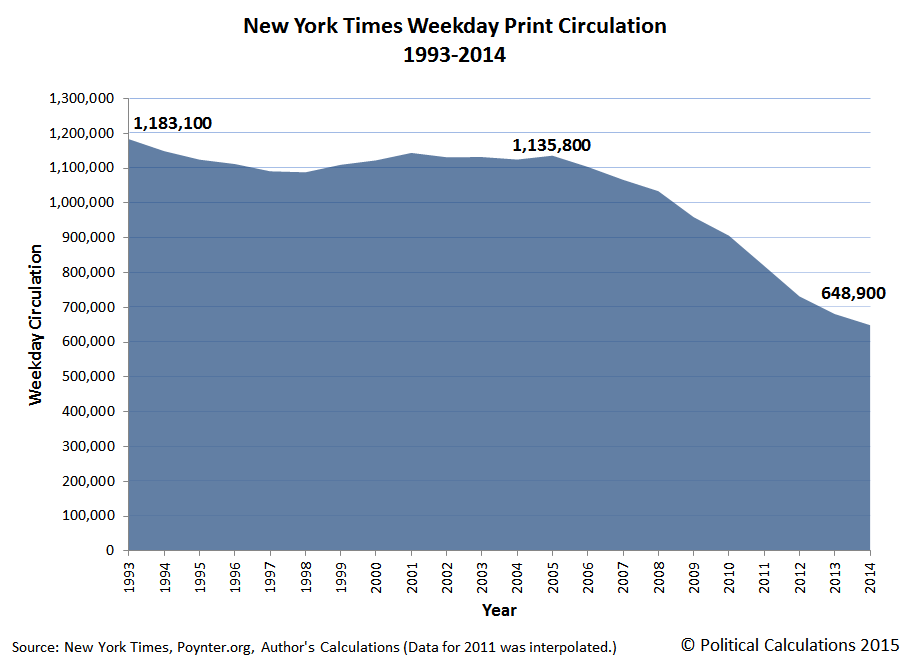The print edition of the New York Times has been disappearing, but the rate at which it is disappering appears to be slowing down. Through the end of 2014, the newspaper's weekday circulation stood at 648,900, which is just 57% of what it was as recently as 2006, the last time the newspaper's print circulation peaked, and is 55% of what it was in 1993, the first year for which the New York Times Company's (NYSE: NYT) annual reports documenting the newspaper's circulation were filed online with the Securites and Exchange Commission.
The New York Times has been seeking to transform itself into a primarily digital entity, as the company has gone from zero paying digital subscribers in 2010 to 910,000 in 2014. The company will likely surpass one million digital subscriptions by the end of the second quarter of 2015.
While that change has been going on, New York Times has also been transforming itself into primarily a national entity, rather than a regional one. The company's 2014 annual report is the first that provides no breakdown of how its circulation is divided between the 31-county region that had defined its "home" market and the rest of its circulation.
In 1993, the New York Times 31-county home market had accounted for 64% of its total weekday circulation. As recently as 2013, that figure had fallen to 43%, which had been buoyed up in part from previous years by its recent increase in digital subscriptions.
Since beginning its digital conversion after 2009 when it had a total revenue of $1.58 billion, the New York Times Company's revenues have fluctuated between a low of $1.55 billion (2011) and a high of $1.60 billion (2013), falling to $1.59 billion in 2014. Since 2009, the company has largely exchanged revenue from advertising, which has fallen from $797 million to $662 million, for revenue from circulation, which has increased from $683 million to $837 million. Combined, those changes represent a net gain for the New York Times Company of $19 million in revenue over the last five years.
It certainly can be a lot of work to just tread water.
Data Sources
The New York Times Company. Annual Reports (10-K SEC Filings). 1993-2014. Accessed 17 June 2015.
The New York Times Company. The New York Times Announces Solid Circulation Gains. [Press Release]. 1 May 2014. Accessed 17 June 2015.
Beaujon, Andrew. New York Times passes USA Today in daily circulation. Poynter. [Online Article]. 30 April 2013. Accessed 17 June 2015.
Labels: business
Welcome to the blogosphere's toolchest! Here, unlike other blogs dedicated to analyzing current events, we create easy-to-use, simple tools to do the math related to them so you can get in on the action too! If you would like to learn more about these tools, or if you would like to contribute ideas to develop for this blog, please e-mail us at:
ironman at politicalcalculations
Thanks in advance!
Closing values for previous trading day.
This site is primarily powered by:
CSS Validation
RSS Site Feed
JavaScript
The tools on this site are built using JavaScript. If you would like to learn more, one of the best free resources on the web is available at W3Schools.com.
